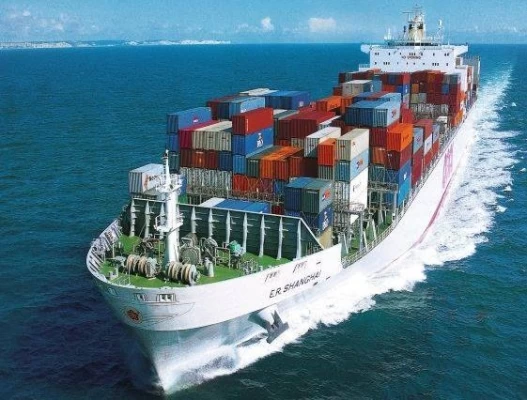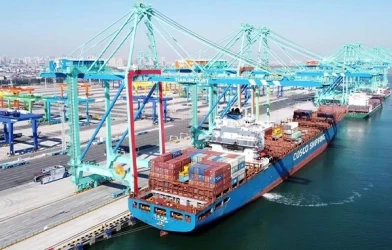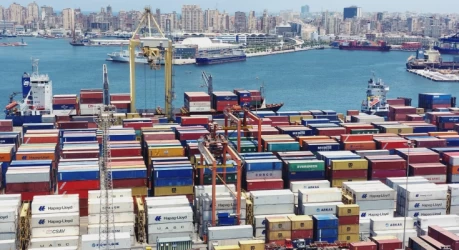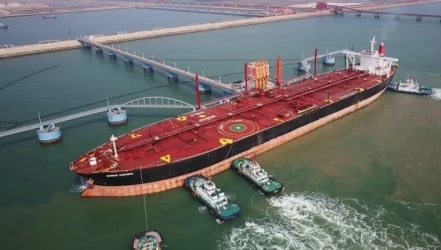Sea freight at Taicang port
The Port of Antwerp, located in Belgium, is one of Europe’s largest and most significant ports. Known for its strategic location and advanced infrastructure, Antwerp plays a crucial role in global maritime transport. This article offers a comprehensive guide to maritime transport in the Port of Antwerp, highlighting its importance, facilities, and role in international trade.
1. Strategic Location and Global Connectivity
The Port of Antwerp is located in the heart of Europe, providing direct access to the North Sea. It serves as a major gateway for goods coming from and going to all parts of the world. The port’s proximity to key European industrial and consumption centers makes it a vital hub for imports and exports. Its connections to railways, roads, and inland waterways ensure seamless transport beyond the port, extending its reach across the continent.
2. Port Infrastructure and Facilities
Antwerp boasts state-of-the-art infrastructure and facilities to handle all types of cargo, including containers, bulk, liquid bulk, and Ro-Ro (roll-on/roll-off) goods. The port’s container terminals are equipped with the latest technology, allowing for efficient and rapid loading and unloading of cargo. The deep-water docks enable large vessels, including ultra-large container ships, to dock at Antwerp. Additionally, the port has specialized terminals for chemicals, petroleum products, and other hazardous goods, which makes it a key location for industries like petrochemicals and energy.
3. Types of Cargo Handled
The Port of Antwerp handles a diverse range of cargo:
- Containerized Cargo: Antwerp is a key hub for container shipping, with millions of TEUs (Twenty-foot Equivalent Units) processed each year. It connects Europe with major trade routes in Asia, North America, and Africa.
- Liquid Bulk Cargo: As one of the largest chemical hubs in the world, Antwerp handles significant volumes of liquid bulk such as chemicals, petroleum, and gas.
- Dry Bulk Cargo: The port is also a major player in the transportation of dry bulk cargo like grains, minerals, and coal.
- General Cargo: The port handles a wide variety of other general cargo, including machinery, vehicles, and raw materials.
4. Environmental Sustainability Initiatives
The Port of Antwerp has implemented several initiatives to promote sustainability and reduce its environmental impact. One of the key projects is the use of shore power technology, which allows ships to switch off their engines while docked and use renewable energy sources from the port. Additionally, Antwerp is investing in alternative fuel projects, including hydrogen and LNG (liquefied natural gas), to create a more sustainable maritime transport system.
5. Role in Global Trade
Antwerp plays a vital role in connecting European markets with the rest of the world. Its vast network of shipping routes and logistics services enables it to serve as a major transit point for goods between Europe, Asia, and the Americas. As part of the TEN-T (Trans-European Transport Network), it facilitates international trade and contributes significantly to the Belgian and European economies.
6. Digitalization and Innovation in Maritime Transport
The Port of Antwerp has embraced digital transformation to improve its operational efficiency and competitiveness. Smart port technologies, such as real-time tracking, automated terminals, and blockchain for secure trade documentation, are being implemented to streamline port operations. The port's innovation center is continuously developing solutions that enhance the shipping process, including more efficient customs clearance procedures and cargo management systems.
7. Challenges and Future Prospects
Despite its many advantages, the Port of Antwerp faces challenges such as increasing competition from other European ports, the need for continuous infrastructural improvements, and the impact of global economic fluctuations. However, with ongoing investments in technology, sustainability, and expansion projects like the deepening of the River Scheldt, the port is well-positioned to maintain its leading role in global maritime transport.
Conclusion
The Port of Antwerp is a key player in global maritime transport, offering cutting-edge facilities, excellent connectivity, and a wide range of cargo-handling capabilities. As a vital hub in Europe’s trade network, the port continues to expand and innovate to meet the demands of modern global commerce while committing to sustainability and digitalization. For companies looking to engage in international trade, Antwerp offers unparalleled access to global markets and remains a pivotal point in the maritime industry.
If you have any specific questions or need further assistance, feel free to ask!











